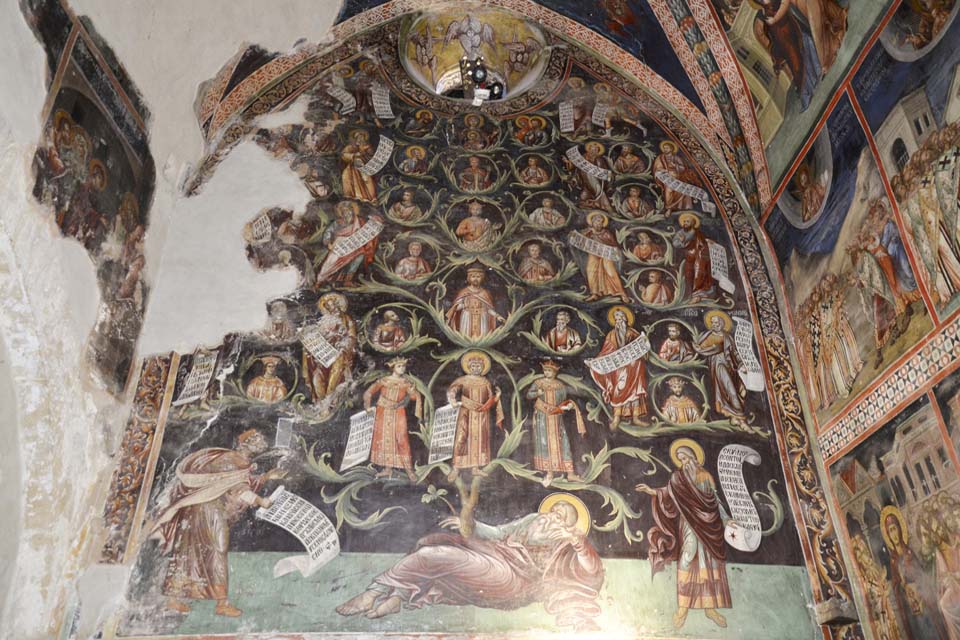The Monastery of Agios Ioannis (St. John) Lambadistis Frescoes
As seen in the decor and frescoes, the monastery flourished during the Byzantine period, as well as during the French Occupation (1191-1489) and the Venetian domination (1489-1571). The frescoes were created in different times, from the 11th to the 16th century and are of different styles. Many icons kept in the monastery are also important to mention, such as Agios Ioannis the Lampadistis of the 14th century, Agios Iraklidios of the 16th century and several others. It is also worth mentioning that the iconostasis of the catholic monastery is the oldest preserved wooden iconostasis in Cyprus. Built in the 13th century, it has beautiful decorations with coats of arms and other designs. During the Ottoman domination (1571-1878), the monastery experienced significant growth, especially in the very difficult conditions of the time. In the 18th century it was reported that 14 monks lived there, it had 4 living areas. It then collapsed and at the beginning of the last century, was abandoned.
Location
Frescoes - Icons
Frescoes of Panagia tou Araka Church
The most beautiful century of Byzantine art has completed its cycle, with the occupation of Cyprus by Richard the Lionheart in 1191. The epilogue of this period is depicted in the main church of the Monastery of Panagia tou Araka in the village of Lago
Frescoes of the Archangel Michael Church
The Church of Archangel Michael has been characterised as one of the most important monuments in the area due to the well-preserved Byzantine frescoes of the 15th century and the wooden temple shield, also painted by Byzantine representations. Notewort
Frescoes of the Holy Monastery of Panagia Chrysokourdalliotissa
The frescoes of the Church, preserved at the same time as the church was by the Department of Antiquities of Cyprus, date back to the first half of the 16th century, but most of them have unfortunately since been destroyed. Those in very good condition
Frescoes of the Panagia Moutoulla Church
All the frescoes of the Sacred Step and the main temple date back to 1280, when the temple was built. They are distinguished by their linear austerity, the limited color scale and the bad proportions of the figures. The bodies are dull, the heads dispr













